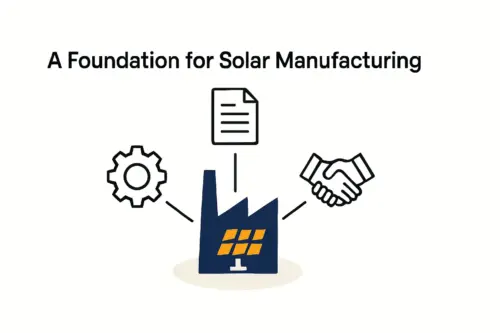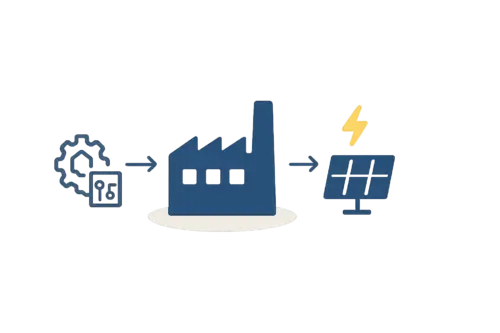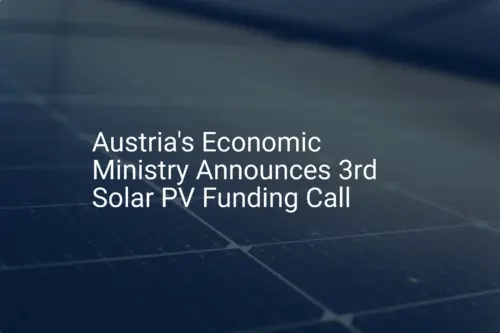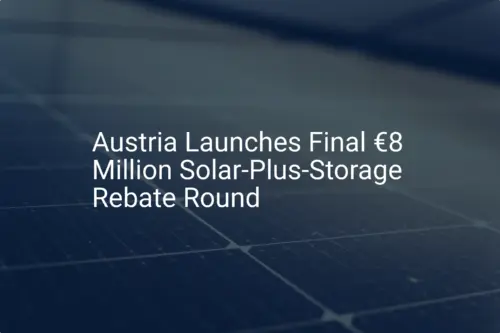For international investors evaluating new markets, government stability and financial support are often as critical as technical feasibility. While many countries offer incentives, few present a framework as structured and strategically aligned as Austria. Driven by a national mandate to achieve 100% renewable electricity by 2030, the country has built a multi-layered support system designed to attract and nurture investment in the solar value chain.
This article outlines the key financial incentives, tax benefits, and support programs available to entrepreneurs and companies planning to establish solar module production facilities in Austria. It clarifies the tangible financial advantages of choosing Austria as a European manufacturing base.
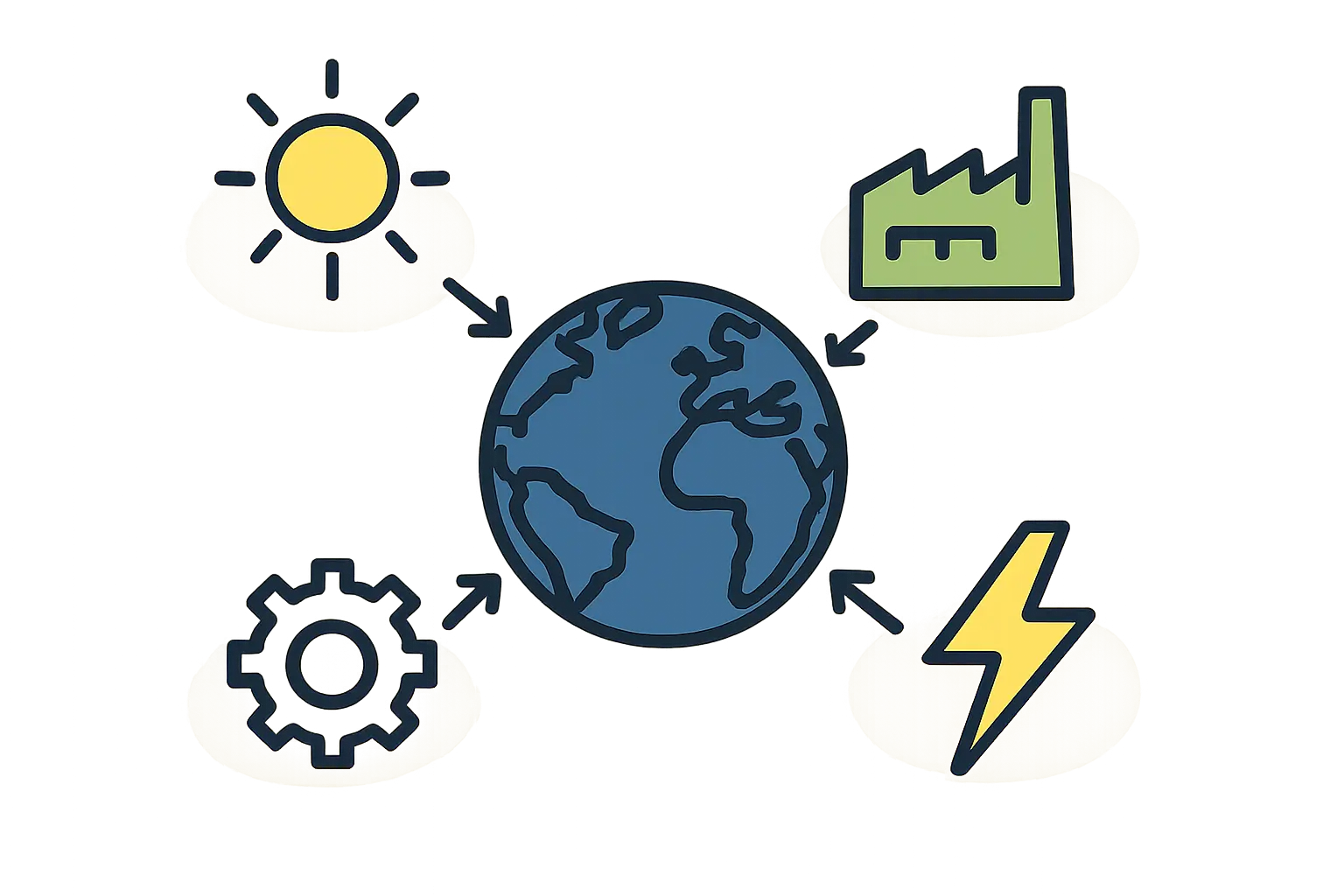
The Strategic Framework: Austria’s Renewable Energy Expansion Act (EAG)
The foundation of Austria’s commitment to renewables is the Erneuerbaren-Ausbau-Gesetz (EAG), or the Renewable Energy Expansion Act. More than just a policy statement, this legislation is a long-term roadmap that underpins the entire support ecosystem. Its primary goal is to ensure that all electricity consumed in Austria by 2030 comes from renewable sources.
For a potential manufacturer, this act provides two crucial certainties:
-
Sustained Market Demand: The EAG creates a strong, predictable domestic market for solar modules for the foreseeable future.
-
Political Stability: The incentives are not short-term political gestures but are embedded in a long-term national strategy, providing investors with confidence and planning security.
Understanding this framework is the first step in appreciating the full spectrum of solar manufacturing opportunities in Austria.
Direct Financial Support for Solar Manufacturers
Alongside this policy, the Austrian government and its agencies offer direct financial injections to de-risk investment and accelerate growth. These programs lower the initial capital barrier and support ongoing innovation.
Investment Subsidies for New Production Facilities
One of the most significant direct incentives is the investment subsidy for establishing new green-technology production plants. Administered by agencies like ÖMAG (Abwicklungsstelle für Ökostrom AG), these grants can cover up to 30% of eligible investment costs.
Ready to make big Profits?
The solar Industry is Booming
WE HELP NEWCOMERS to the solar industry start their own solar module production line. Customers can make BIG PROFITS by selling modules and finding investors, without wasting money and time on things they don't need!
Eligible costs typically include:
- Procurement of specialized manufacturing machinery (e.g., stringers, laminators, testers).
- Construction or adaptation of the factory building.
- Essential infrastructure related to the production line.
This subsidy can substantially reduce the initial capital required, directly impacting the overall investment requirements for a solar factory and improving the project’s return on investment from day one.
R&D Grants for Technological Advancement
Austria positions itself as a hub for high-quality, innovative manufacturing. To support this goal, several bodies fund research and development:
-
Austrian Research Promotion Agency (FFG): The FFG is the national funding institution for industrial research and development. It offers non-repayable grants and loans for projects focused on developing new technologies, improving production efficiency, or creating next-generation solar products.
-
Climate and Energy Fund (KLIEN): This fund specifically supports projects that contribute to the energy transition. A solar manufacturer developing innovative, highly efficient, or circular-economy-focused modules would be a prime candidate for KLIEN funding.
Guarantees and Low-Interest Loans
For businesses that may not qualify for direct grants or require additional financing, the Austria Wirtschaftsservice GmbH (AWS) provides critical support. As the federal promotional bank, AWS offers government-backed guarantees that make it significantly easier for new ventures—including those led by foreign investors—to secure loans from commercial banks. It also provides low-interest loans, or ‘soft loans,’ to further ease the financial burden during the startup phase.
Tax Advantages and Fiscal Incentives
The Austrian tax system includes specific provisions to encourage investment in renewable energy and research, allowing companies to retain more capital for growth.
The Research Premium (Forschungsprämie)
Perhaps the most attractive fiscal incentive is the ‘Forschungsprämie,’ or research premium. Companies can claim a 14% cash premium on all qualifying R&D expenditures. This is not a tax deduction but a direct cash payment from the tax office, even if the company is not yet profitable.
For example, if a manufacturer invests €500,000 in a year on developing a new module encapsulation technique, it receives €70,000 back in cash. This powerful incentive actively encourages continuous innovation.
Accelerated Depreciation (AfA)
Austrian tax law allows for accelerated depreciation (Absetzung für Abnutzung) on assets related to renewable energy. This means a company can write off the cost of its manufacturing equipment against its taxable income at a faster rate than standard assets. The primary benefit is a lower tax liability in the crucial early years of operation, improving cash flow and allowing for faster reinvestment.
Understanding Regional and EU-Level Support
The support network extends beyond the federal government, offering further opportunities for savvy investors.
Provincial-Level Incentives
Individual Austrian states (Bundesländer), particularly industrial hubs like Upper Austria and Styria, often have their own economic development programs. These can include additional grants, support for land acquisition, or funding for workforce training. The choice of location within Austria can unlock another layer of financial support.
Access to European Union Funding
As a member of the EU, Austria-based companies are eligible to apply for large-scale European funding programs. For ambitious projects, especially those with a strong innovation or cross-border component, funds like the EU Innovation Fund or the Just Transition Fund offer a significant source of capital.
A Practical Perspective on Navigating the System
While the array of incentives is comprehensive, accessing them requires a systematic approach. Based on experience from J.v.G. Technology GmbH turnkey projects, a successful application process hinges on a well-documented and professional business plan. This plan must clearly outline the project’s technical specifications, market strategy, financial projections, and contribution to Austria’s energy goals.
Securing funding is a core component of the initial planning phase, and a structured approach, as outlined in guides on how to start a solar factory, is essential for navigating the administrative requirements effectively.

Frequently Asked Questions (FAQ)
Are these incentives available to foreign investors?
Yes. Austria actively encourages foreign direct investment and, in general, does not discriminate between domestic and foreign-owned companies when it comes to accessing these support programs.
What is the typical timeline for securing funding?
The timeline can vary significantly depending on the specific program and the complexity of the project. It is prudent to plan for an application and approval process that can take between 6 and 12 months.
Is deep technical expertise in solar required to apply for these funds?
While the investor does not need to be a solar engineer, the application must be supported by a credible and detailed technical plan. Partnering with experienced engineering consultants is a common and highly recommended approach to ensure the project’s feasibility is clearly demonstrated.
Do these incentives apply only to module assembly, or also to cell or wafer production?
The programs are generally applicable across the photovoltaic value chain. However, incentives related to R&D and innovation (like the FFG grants and the research premium) are particularly well-suited for higher-value manufacturing steps like cell production or the development of new materials.
Conclusion and Next Steps
Austria offers a robust and multi-layered support system for investors in the solar manufacturing sector. This ecosystem—combining direct investment subsidies, powerful tax incentives, R&D grants, and government-backed loans—rests on a clear and long-term national energy strategy.
For entrepreneurs and companies looking for a stable, supportive, and strategically located European base, these incentives significantly lower financial barriers and foster an environment of innovation and growth. Understanding this framework is a critical step in evaluating the full potential of establishing a solar production facility in the heart of Europe.



